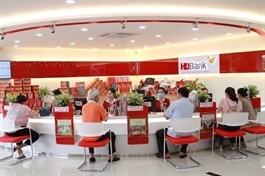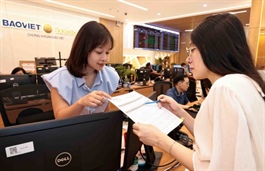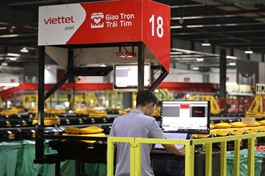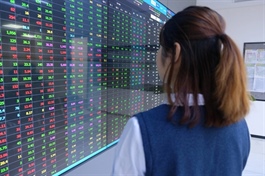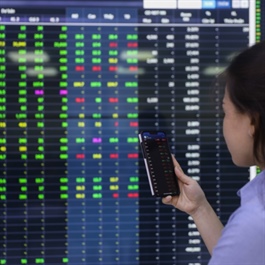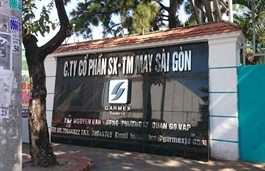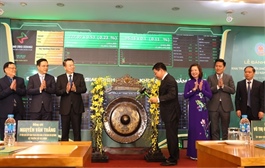Listed firms strive to overcome challenges in 2024
Listed firms strive to overcome challenges in 2024
The stock market in 2024 witnessed the delisting of multiple companies, primarily due to three consecutive years of losses, or cumulative losses exceeding the actual contributed capital.
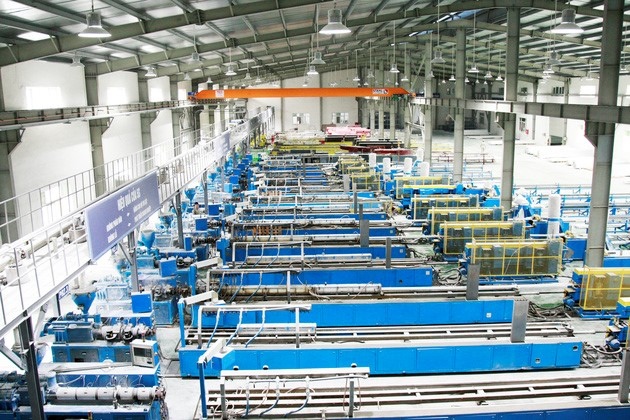
A processing plant of Đông Á Plastic JSC. — Photo dag.com.vn |
In the positive context of the domestic economy in 2024, numerous companies are still navigating obstacles and losses, aiming to regain investor trust and fix financial stability.
The stock market in 2024 witnessed the delisting of multiple companies such as SDT of Sông Đà 10 JSC, DAG of Đông Á Plastic JSC, HBC of Hòa Bình Construction Group and HNG of Hoàng Anh Gia Lai Agriculture JSC.
These delistings were primarily due to three consecutive years of losses exceeding the actual contributed capital.
For example, Hòa Bình Construction Group reported accumulated losses reaching VNĐ3.24 trillion (US$127.6 million) by the end of 2023, surpassing its contributed capital of over VNĐ2.74 trillion.
Similarly, Hoàng Anh Gia Lai has been experiencing losses for three consecutive years, with losses of over VNĐ1.1 trillion in 2021, nearly VNĐ3.6 trillion in 2022 and nearly VNĐ1.1 trillion in 2023.
Following regulations, delisted stocks can be traded on the UPCoM market. These companies need to trade for a minimum of two years on UPCoM before reapplying for listing on the main stock exchanges, provided they meet the required conditions.
Despite the challenges, companies like Hòa Bình Construction Group have shown resilience.
After a period of losses, the company returned to profitability in early 2024, reporting profits of over VNĐ56.5 billion in the first quarter (Q1), VNĐ684 billion in Q2 and VNĐ12.6 billion in Q3.
Chairman of the Board of Directors of Hòa Bình Construction Group, Lê Viết Hải, expressed regret over the delisting of HBC from HOSE. This move has posed challenges in terms of project bidding, relationship maintenance with partners and banks, along with seeking strategic investors.
HBC's stock price halved upon listing on UPCoM, prompting the company to improve its business performance to relist on HoSE.
In another scenario, Trường Thành Furniture Corporation faced losses until Q3. To expand and become profitable, the company recognised the importance of entering key export markets, with the US standing out as a significant option for its wood products.
Chairman of the Board of Directors of Trường Thành Furniture Corporation, Mai Hữu Tín, highlighted the company's collaborations with the JNL brand to enhance exports to Europe.
Additionally, through its subsidiary, Casadora Furniture Company, with 60 per cent owned by Trường Thành Furniture, it has ventured into the Dubai market.
Trường Thành Furniture's gradual entry into the Middle East market, particularly in Dubai, UAE and Saudi Arabia, aligns with the region's thriving real estate market.
"We have been in contact with numerous potential clients, building relationships and actively bidding on various projects", Tín said.
"While the specific outcomes will materialise in 2025, we are confident that these investments and strategic moves will eventually yield favourable results."
He also reinforced his belief that Trường Thành Furniture will enhance its operational effectiveness in the near future.
As companies like Thuduc House report profits after consecutive losses and others like Novaland focus on financial restructuring and legal compliance, the Vietnamese financial market is witnessing a positive resurgence.
The real estate sector, previously impacted by bond crises and liquidity freezes, is showing signs of recovery in 2024.
Looking ahead, analysts predict a positive recovery in the real estate market in 2025, especially in the latter half of the year.
Head of Research and Development Division at Yuanta Vietnam Securities Company, Nguyễn Thế Minh, anticipates a significant rebound in the real estate market this year.
Following substantial efforts to navigate through legal processes, many developers are gearing up to unveil new projects, playing a vital role in addressing the market's supply constraints.







